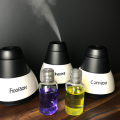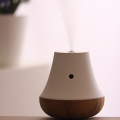-
Table of Contents
- Introduction
- The Benefits of Inhaling Lavender Oil: What You Need to Know
- Is Inhaling Lavender Oil Safe? A Look at the Research
- How to Use Lavender Oil for Aromatherapy: A Step-by-Step Guide
- The Potential Side Effects of Inhaling Lavender Oil
- How to Choose the Right Lavender Oil for Inhalation
- The Best Ways to Inhale Lavender Oil for Maximum Effect
- The History of Lavender Oil and Its Uses in Aromatherapy
- Q&A
- Conclusion
Introduction
Inhaling lavender oil is a popular way to relax and reduce stress. It is also used to treat a variety of ailments, including headaches, insomnia, and anxiety. But is it safe to inhale lavender oil? In this article, we will discuss the potential risks and benefits of inhaling lavender oil, as well as how to do it safely. We will also look at the research that has been done on the effects of lavender oil on the body.
The Benefits of Inhaling Lavender Oil: What You Need to Know
Inhaling lavender oil has been used for centuries to promote relaxation and reduce stress. Recent studies have shown that lavender oil has a variety of health benefits, including improved sleep, reduced anxiety, and improved mood. In this article, we will discuss the benefits of inhaling lavender oil and how to use it safely.
The primary benefit of inhaling lavender oil is its calming effect. Studies have shown that lavender oil can reduce stress and anxiety, improve sleep quality, and even reduce symptoms of depression. Lavender oil has also been found to reduce heart rate and blood pressure, making it an effective tool for relaxation.
In addition to its calming effects, lavender oil has also been found to have anti-inflammatory and antiseptic properties. This means that it can help reduce inflammation and fight off bacteria and viruses. It can also be used to treat skin conditions such as eczema and psoriasis.
When using lavender oil, it is important to use it safely. It is best to use a diffuser or an essential oil inhaler to inhale the oil. This will ensure that the oil is properly dispersed and that you are not inhaling too much. It is also important to use a high-quality oil, as some lower-quality oils may contain impurities that can be harmful.
In conclusion, inhaling lavender oil has a variety of health benefits, including improved sleep, reduced anxiety, and improved mood. It can also be used to reduce inflammation and fight off bacteria and viruses. When using lavender oil, it is important to use it safely and to use a high-quality oil. With proper use, lavender oil can be a powerful tool for relaxation and improved health.
Is Inhaling Lavender Oil Safe? A Look at the Research
Inhaling lavender oil is a popular practice for relaxation and stress relief, but is it safe? Research suggests that lavender oil is generally safe when used in small amounts, but there are some potential risks to consider.
Lavender oil is derived from the flowers of the lavender plant and is used in aromatherapy, massage, and other forms of alternative medicine. It is believed to have calming and soothing effects, and is often used to help reduce stress and anxiety.
The safety of lavender oil depends on the amount used and the method of application. Inhaling lavender oil is generally considered safe, as long as it is done in small amounts. However, it is important to note that some people may be sensitive to the oil and may experience skin irritation or other side effects.
Inhaling lavender oil can also be dangerous if it is done in large amounts or if it is used in a closed space. This can cause dizziness, headaches, and nausea. It is also important to note that lavender oil should not be used on children or pregnant women, as it may cause adverse effects.
Overall, research suggests that inhaling lavender oil is generally safe when used in small amounts. However, it is important to be aware of the potential risks and to use caution when using the oil. It is also important to consult with a healthcare professional before using lavender oil, especially if you are pregnant or have any underlying health conditions.
How to Use Lavender Oil for Aromatherapy: A Step-by-Step Guide
Aromatherapy is a holistic healing treatment that uses natural plant extracts to promote health and well-being. Lavender oil is one of the most popular essential oils used in aromatherapy due to its calming and soothing properties. Here is a step-by-step guide on how to use lavender oil for aromatherapy.
Step 1: Choose a Carrier Oil
Before using lavender oil for aromatherapy, you must first choose a carrier oil. Carrier oils are used to dilute essential oils and help them spread evenly over the skin. Popular carrier oils include jojoba, coconut, and almond oil.
Step 2: Prepare the Mixture
Once you have chosen a carrier oil, you can begin to prepare the mixture. Start by adding a few drops of lavender oil to the carrier oil. The ratio of lavender oil to carrier oil should be 1:4. This means that for every drop of lavender oil, you should add four drops of carrier oil.
Step 3: Apply the Mixture
Once the mixture is ready, you can begin to apply it. Start by massaging the mixture into your skin. You can also use a diffuser to disperse the scent of the lavender oil into the air.
Step 4: Enjoy the Benefits
Finally, sit back and enjoy the benefits of aromatherapy. Lavender oil is known to reduce stress and anxiety, promote relaxation, and improve sleep quality.
By following these steps, you can easily use lavender oil for aromatherapy. Remember to always use caution when using essential oils and consult a healthcare professional if you have any questions or concerns.
The Potential Side Effects of Inhaling Lavender Oil
Inhaling lavender oil is a popular method of aromatherapy, as it is believed to have calming and soothing effects. However, it is important to be aware of the potential side effects of inhaling lavender oil.
The most common side effect of inhaling lavender oil is skin irritation. This can occur if the oil is applied directly to the skin or if it is inhaled in large amounts. Symptoms of skin irritation include redness, itching, and burning.
Inhaling lavender oil can also cause headaches, dizziness, and nausea. These symptoms are usually mild and will go away on their own. However, if they persist, it is important to seek medical attention.
In rare cases, inhaling lavender oil can cause an allergic reaction. Symptoms of an allergic reaction include difficulty breathing, hives, and swelling of the face, lips, or tongue. If you experience any of these symptoms, seek medical attention immediately.
Inhaling lavender oil can also interact with certain medications. If you are taking any medications, it is important to consult with your doctor before using lavender oil.
Finally, it is important to note that lavender oil should not be used by pregnant women or children under the age of two.
In conclusion, inhaling lavender oil can have calming and soothing effects. However, it is important to be aware of the potential side effects, including skin irritation, headaches, dizziness, nausea, allergic reactions, and interactions with certain medications. Additionally, lavender oil should not be used by pregnant women or children under the age of two. If you experience any of the side effects listed above, it is important to seek medical attention.
How to Choose the Right Lavender Oil for Inhalation
When it comes to choosing the right lavender oil for inhalation, there are a few important factors to consider. First, it is important to make sure that the oil is pure and of high quality. This means that it should be free of any additives or synthetic fragrances. It should also be certified organic, if possible.
Second, it is important to consider the type of lavender oil you are using. There are two main types of lavender oil: lavandula angustifolia and lavandula latifolia. Lavandula angustifolia is the most common type of lavender oil and is known for its calming and soothing properties. Lavandula latifolia is a more potent type of lavender oil and is known for its energizing and uplifting properties.
Third, it is important to consider the concentration of the lavender oil. Generally, the higher the concentration, the more potent the oil will be. However, it is important to note that too high of a concentration can be overwhelming and can cause headaches or nausea.
Finally, it is important to consider the method of inhalation. Inhalation can be done through a diffuser, a steam inhaler, or simply by inhaling the oil directly from the bottle. Each method has its own benefits and drawbacks, so it is important to choose the one that best suits your needs.
By taking the time to consider these factors, you can ensure that you are choosing the right lavender oil for inhalation. With the right oil, you can enjoy the calming and soothing effects of lavender without any of the negative side effects.
The Best Ways to Inhale Lavender Oil for Maximum Effect
Lavender oil is a popular essential oil that is known for its calming and soothing properties. It is often used to help reduce stress, anxiety, and insomnia. Inhaling lavender oil is one of the best ways to experience its benefits. Here are the best ways to inhale lavender oil for maximum effect:
1. Direct Inhalation: Direct inhalation is the simplest and most effective way to inhale lavender oil. Simply add a few drops of lavender oil to a tissue or cotton ball and inhale deeply. This method allows the oil to enter your lungs directly, providing the most potent effect.
2. Diffuser: A diffuser is a device that disperses essential oils into the air. This is a great way to enjoy the benefits of lavender oil in a larger space. Simply add a few drops of lavender oil to the diffuser and let it disperse the oil into the air.
3. Steam Inhalation: Steam inhalation is another great way to inhale lavender oil. Simply add a few drops of lavender oil to a bowl of hot water and inhale the steam. This method allows the oil to enter your lungs directly, providing a powerful effect.
4. Bath: Adding a few drops of lavender oil to your bathwater is a great way to enjoy the benefits of lavender oil. The hot water will help to disperse the oil into the air, allowing you to inhale it directly.
By following these tips, you can experience the calming and soothing effects of lavender oil in the most effective way possible.
The History of Lavender Oil and Its Uses in Aromatherapy
Lavender oil has been used for centuries for its therapeutic and medicinal properties. It is derived from the lavender plant, which is native to the Mediterranean region and is now cultivated in many parts of the world. Lavender oil has a sweet, floral aroma and is widely used in aromatherapy.
The use of lavender oil dates back to ancient times. In ancient Egypt, it was used to embalm mummies and was also used in perfumes. In ancient Greece, it was used to treat insomnia and anxiety. In the Middle Ages, it was used to treat a variety of ailments, including headaches, skin irritations, and digestive problems.
In modern times, lavender oil is used in aromatherapy to promote relaxation and reduce stress. It is believed to have calming and soothing effects on the body and mind. It is also used to treat headaches, insomnia, depression, and anxiety.
Lavender oil is also used in massage therapy to help relieve muscle tension and pain. It is believed to have anti-inflammatory properties and can help reduce swelling and inflammation. It is also used to treat skin conditions such as eczema and psoriasis.
Lavender oil is also used in cosmetics and personal care products. It is believed to have antiseptic and antibacterial properties and is often used in soaps, lotions, and shampoos.
Lavender oil is a popular ingredient in many essential oil blends. It is often combined with other essential oils such as chamomile, rose, and ylang-ylang to create a calming and soothing aroma.
Lavender oil is a safe and natural way to promote relaxation and reduce stress. It is widely used in aromatherapy and massage therapy and is also used in cosmetics and personal care products. Its sweet, floral aroma is believed to have calming and soothing effects on the body and mind.
Q&A
1. Is it safe to inhale lavender oil?
Yes, it is generally safe to inhale lavender oil. However, it is important to use only pure, therapeutic-grade lavender oil and to follow the instructions on the label.
2. What are the benefits of inhaling lavender oil?
Inhaling lavender oil can help to reduce stress and anxiety, improve sleep, and reduce inflammation. It can also help to reduce headaches, improve mood, and boost the immune system.
3. Are there any risks associated with inhaling lavender oil?
Yes, there are some risks associated with inhaling lavender oil. It can cause skin irritation if applied directly to the skin, and it can cause allergic reactions in some people. It is also important to avoid inhaling too much lavender oil, as this can cause headaches and dizziness.
4. How should lavender oil be inhaled?
Lavender oil can be inhaled directly from the bottle or from a diffuser. It can also be added to a hot bath or shower, or used in a steam inhalation.
5. How often should lavender oil be inhaled?
It is generally recommended to inhale lavender oil no more than once or twice a day.
6. How long does the effect of inhaling lavender oil last?
The effects of inhaling lavender oil can last for several hours.
7. Is it safe to use lavender oil on children?
Yes, it is generally safe to use lavender oil on children, but it is important to use only pure, therapeutic-grade lavender oil and to follow the instructions on the label. It is also important to consult a doctor before using lavender oil on children.
Conclusion
In conclusion, it is generally safe to inhale lavender oil, as long as it is done in moderation and with caution. Lavender oil has many potential benefits, such as reducing stress and anxiety, improving sleep, and relieving headaches. However, it is important to remember that lavender oil can be irritating to the skin and mucous membranes, so it is important to use it with caution and to dilute it with a carrier oil before use. Additionally, it is important to consult with a healthcare professional before using lavender oil, especially if you are pregnant or have a medical condition.




